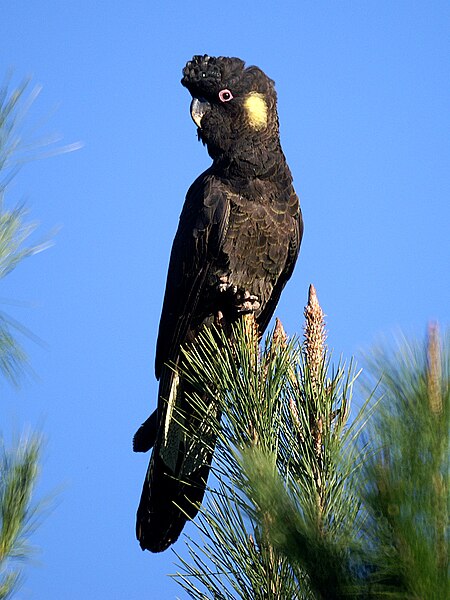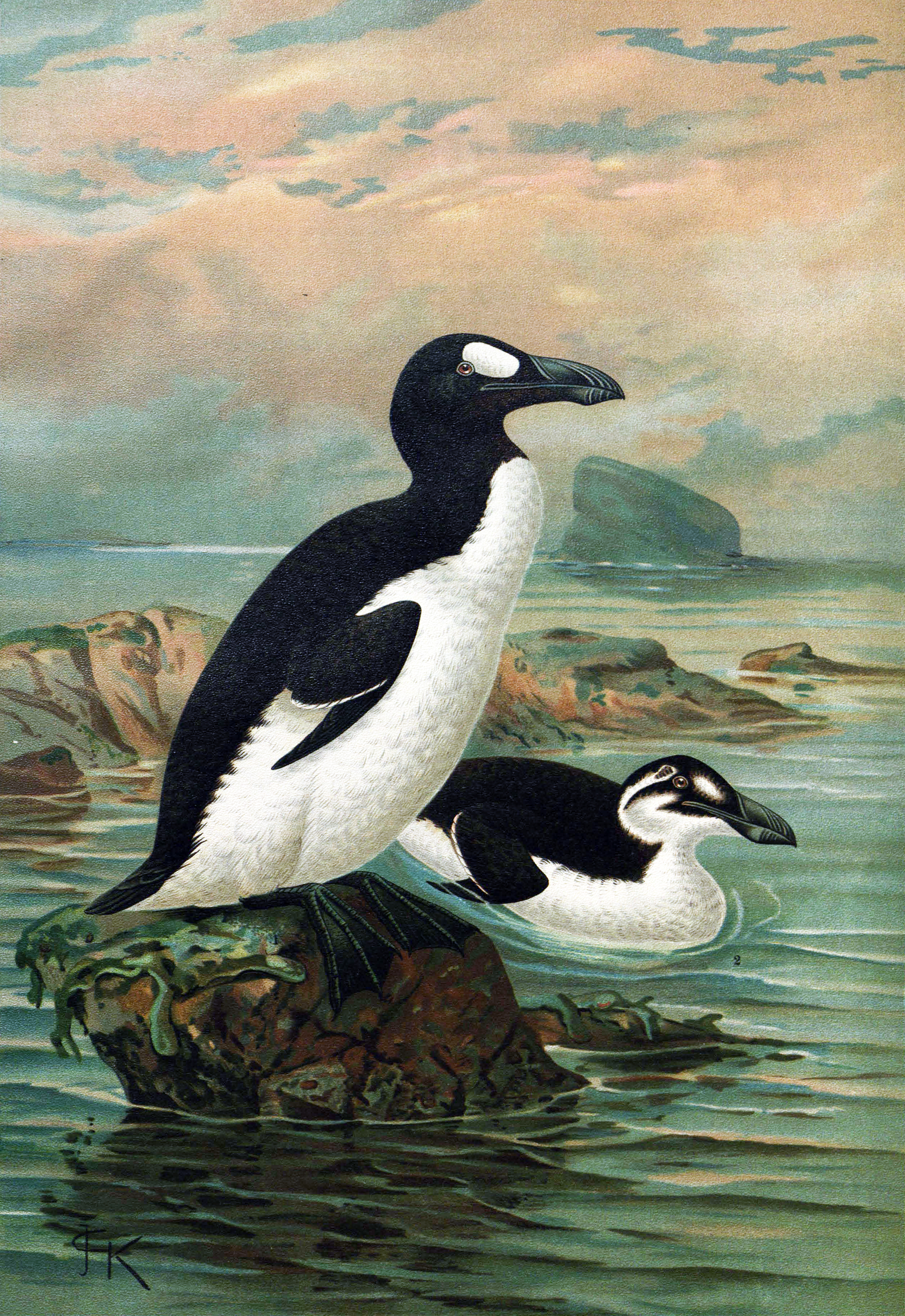Aviculturists desiring to keep ducks are fortunate in that two of the world’s most brilliantly-colored species, the Mandarin Duck (Aix graiculata) and the Wood Duck (Aix sponsa), are small, hardy and have long been bred in captivity. Despite occupying opposite ends of the globe, their natural histories and captive care are very similar. While the decision to keep aquatic birds should not be made lightly, either of these little beauties makes an excellent “first duck” for those with the means to provide for them. Read More »
Category Archives: Bird Conservation
Feed SubscriptionBird Extinction Announced – the Alaotra Grebe is Gone Forever – Part 2
 In Part 1 of this article I relayed the sad news that the Alaotra Grebe (Tachybaptus rufolavatus), a small, fish-eating waterbird once endemic to Madagascar, has joined the ranks of the 130+ birds that have been declared extinct since the year 1500. Some of the factors that caused its demise, explained in that article, also endanger the other 190 species of birds considered to be threatened with imminent extinction. Today I’d like to review the status of rare and endangered birds in the USA. Read More »
In Part 1 of this article I relayed the sad news that the Alaotra Grebe (Tachybaptus rufolavatus), a small, fish-eating waterbird once endemic to Madagascar, has joined the ranks of the 130+ birds that have been declared extinct since the year 1500. Some of the factors that caused its demise, explained in that article, also endanger the other 190 species of birds considered to be threatened with imminent extinction. Today I’d like to review the status of rare and endangered birds in the USA. Read More »
Rare Australian Cockatoo Chicks Hatch – Population Now at 25 Birds
 Although a total population of 25 individuals does not sound very promising, hope remains that the Eyre Peninsula population of Yellow-Tailed Black Cockatoos (Calyptorhynchus funereus xanthanotus) will rebound. With only 9 birds believed left in the wild, even the hatching of single chick, the first since the devastating brush fires of January, 2005, is cause for celebration. A second chick, hatched at the George Wildlife Park in Adelaide, brought the captive population to 15.
Although a total population of 25 individuals does not sound very promising, hope remains that the Eyre Peninsula population of Yellow-Tailed Black Cockatoos (Calyptorhynchus funereus xanthanotus) will rebound. With only 9 birds believed left in the wild, even the hatching of single chick, the first since the devastating brush fires of January, 2005, is cause for celebration. A second chick, hatched at the George Wildlife Park in Adelaide, brought the captive population to 15.
Fires Deliver the Knockout Punch
While this species does range into other parts of Australia, the isolated population inhabiting South Australia’s Eyre Peninsula has long been at risk of extinction. The massive fires of 2005 pushed them further towards the brink, destroying breeding habitat and depressing food supplies. Read More »
Bird Extinction Announced – the Alaotra Grebe is Gone Forever
 Christening 2010 the “International Year of Biodiversity” has unfortunately been of no use to the Alaotra Grebe (Tachybaptus rufolavatus). The small waterbird, once endemic to Madagascar, has become the first avian species to be declared extinct since the Liverpool Pigeon disappeared in 2008. Birdlife International which recently (May, 2010) added the Alaotra Grebe to the IUCN Red List of Extinct Species, noted that it has not been sighted since 1985, despite surveys of the single brackish lake in which it dwelled.
Christening 2010 the “International Year of Biodiversity” has unfortunately been of no use to the Alaotra Grebe (Tachybaptus rufolavatus). The small waterbird, once endemic to Madagascar, has become the first avian species to be declared extinct since the Liverpool Pigeon disappeared in 2008. Birdlife International which recently (May, 2010) added the Alaotra Grebe to the IUCN Red List of Extinct Species, noted that it has not been sighted since 1985, despite surveys of the single brackish lake in which it dwelled.
The image posted with this article is the only known photograph of the Alaotra Grebe. Other recently extinct birds, such as the penguin-like Great Auk, are known only from museum specimens (please see photo).
Recent Bird Extinctions
The Alaotra Grebe joins over 130 other birds that have disappeared since the year 1500. Nearly all bird families have been affected, with parrots and flightless island dwellers being particularly hard-hit. In the last 25 years, 2 other grebes (the Columbian and Atlitan Grebes) have become extinct; Peru’s Junin Grebe is thought to be represented by a mere 250 individuals.
In the USA, Hawaii’s Po’ouli Honeycreeper is believed extinct. Worldwide, 190 species of birds are considered to be Critically Endangered and facing imminent extinction.
Why the Alaotra Grebe was Lost
Although detailed studies have not been conducted, it appears that a number of sinister factors combined to seal the Alaotra Grebe’s fate. Two large species of predatory fishes that were introduced to Lake Alaotra, the grebe’s sole habitat, consumed chicks and out-competed the birds for food (small fish). Also, a drastic increase in the use of gill nets by local fisherman resulted in many grebes being drowned, and introduced plants have destroyed critical nesting areas.
Why Should We Care?

I have often faced this question when speaking of the disappearance of seemingly “inconsequential” creatures, especially when addressing children in NYC and others far removed from “nature”. The answers are numerous and complex, and I must admit that I was not always successful in generating concern.
Birdlife International has come up with a wonderful idea…readers can post their opinions as to why the extinction of this bird, or any plant or animal, should concern us. There are already a great many insightful comments…please add your own here.
Further Reading
Please check out this BBC article for more bad and good bird conservation news.
Alaotra Grebe image referenced from wikipedia and originally Paul Thompson
Conservation Action Brings Yellow-Eared Parrot Back from “Extinction”
Finally, some good conservation news! Believed extinct until 81 individuals were found in the Columbian Andes in 1998, the Yellow-Eared Parrot (Ognorhynchus icterotis) is now recovering nicely. Thanks to an intensive, country-wide conservation program, the population now numbers over 1,000. In fact, the International Conservation Union (IUCN) has downgraded the species from “Critically Endangered” to “Endangered”, an action that is all-too-rare these days.
Cooperative Efforts
Although the bird’s recovery is believed largely due to the efforts of 3 major conservation organizations – Fundacion Pro Aves, American Bird Conservation and Fundacion Loro Parque, over 180 individuals, 47 organizations and numerous local communities also played a vital role. Their spectacular success will no doubt be very useful in serving as a template for recovery efforts aimed at other species of birds.
Survival Problems and Solutions
 The Yellow-Eared Parrot faced, in addition to the usual dangers that decimate rare species, a unique threat – it nests almost exclusively in the Wax Palm. This palm, which is also Columbia’s National Tree, is much valued for use in certain religious services of the Catholic Faith, and is itself in danger of extinction. Fortunately, the Catholic Church became an enthusiastic supporter of the parrot recovery plan, and is working hard to reduce Wax Palm usage.
The Yellow-Eared Parrot faced, in addition to the usual dangers that decimate rare species, a unique threat – it nests almost exclusively in the Wax Palm. This palm, which is also Columbia’s National Tree, is much valued for use in certain religious services of the Catholic Faith, and is itself in danger of extinction. Fortunately, the Catholic Church became an enthusiastic supporter of the parrot recovery plan, and is working hard to reduce Wax Palm usage.
The creation of the 10,000 acre Parrot Conservation Corridor, and an ambitious nest box installation program, is also key to this Yellow-Eared Parrot’s continued survival.
Further Reading
Please see my article Religion, Psittacines and Palms for info on the conservation of this species and the Golden-Plumed Parakeet in Ecuador.
Natural history and conservation info is available in this Birdlife International article.
 That Bird Blog – Bird Care and History for Pet Birds
That Bird Blog – Bird Care and History for Pet Birds
